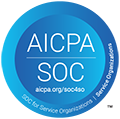On February 18, 2020, the Centers for Medicare and Medicaid Services
(CMS) issued a proposed
regulation which would specify how and when CMS will calculate and impose
what are called civil money penalties (CMPs) when group health plan (GHP) and
non-group health plan (NGHP) responsible reporting entities (RREs) fail to meet
their Section 111 Medicare Mandatory Insurer Reporting responsibilities. NGHPs include workers’ compensation (including
self-insurance) liability and no-fault insurers.
Background
Section 111 of the Medicare, Medicaid and SCHIP Extension
Act of 2007 added requirements for GHPs and NHGPs to report Medicare
beneficiary enrollees and claimants to Medicare on a quarterly basis. NGHPs are specifically required to report acceptance
and termination of ongoing responsibility for medical (ORM), if any, and total
payment obligation to the claimant (TPOC), a settlement, judgment award or
other payment.
The statute originally called for a mandatory penalty of
$1,000 per day per claimant for noncompliance with reporting. Subsequently, the SMART Act of 2012 made CMPs
discretionary for NGHPs, modifying the language to indicate that penalties of up
to $1,000 per day per claimant may be imposed. The SMART Act also required
CMS to issue regulations prior to imposing CMPs.
CMS’s CMP Regulation Proposal
Situations where CMS may impose penalties:
- when
RREs fail to register and report as required by MSP reporting requirements;
- when
RREs report as required, but report in a manner that exceeds error tolerances
established by the Secretary of the Department of Health and Human Services
(the Secretary);
- when
RREs contradict the information, the RREs have reported when CMS attempts to
recover its payments from these RREs.
CMS further states,
This proposed rule would also establish CMP amounts and
circumstances under which CMPs would and would not be imposed.
Failure to report at all
Should it fail to perform the required Section 111
reporting at all within one year of the date a settlement or other payment
obligation was established, an NGHP would be subject to a CMP of up to $1,000
for each day of noncompliance for each individual whose information should have
been reported. A maximum penalty of $365,000 per individual per year
applies.
RREs responses to conditional payment contradict the
information the RREs previously reported
Entities that have performed Section 111 reporting as
required, but subsequently provide information that contradicts reported
information in response to MSP recovery efforts, would be subject to a CMP
based on the number of days that the entity failed to appropriately report
updates to beneficiary records. For NGHP entities, the penalty would be up to
$1,000 per day of noncompliance, for a maximum penalty of $365,000 (365 days)
per individual.
Data reported by RRE in error
If a GHP or NGHP entity has reported, and exceeds any
error tolerance(s) threshold established by the Secretary in any 4 out of 8
consecutive reporting periods we propose that the initial and maximum error
tolerance threshold would be 20 percent (representing errors that prevent 20
percent or more of the beneficiary records from being
processed), with any reduction in that tolerance to be published for notice and
comment in advance of implementation. We intend for this tolerance to be
applied as an absolute percentage of the records submitted in a given reporting
cycle.
CMS goes on to note that it is not just any error, but
significant errors, as defined in the Section 111 User Guide, which prevent a
file from being accepted. Examples include failure to provide an individual’s
last name or valid date of birth, or failure to provide a matching Tax Identification
Number.
For NGHPs, penalties would be similar, but on a tiered
approach with an initial $250 penalty per day of noncompliance for each
individual; it increases each subsequent quarter of noncompliance by $250 per
day to a maximum of $1,000 per day (it is standardized to 90 days for a total
of up to $90,000 per individual per reporting period). Penalties reduce
by $250 per day for each subsequent quarter of compliance.
Safe harbors from reporting penalties
Penalties will not be imposed if any of the following
are true:
- An
NGHP entity reports information within one year of the date of settlement;
- A
reporting entity’s submission complies with the reporting error
thresholds; or
- If an NGHP entity is unable to obtain
required reporting information from Medicare beneficiaries document their good
faith efforts to obtain the information.
In regard to documenting good faith efforts, all of
the following are required:
- The NGHP has communicated the need for this
information to the individual and his or her attorney or other representative
and requested the information from the individual and his or her attorney or
other representative at least twice by mail and at least once by phone or other
means of contact such as electronic mail in the absence of a response to the
mailings.
- The NGHP certifies that it has not received a
response in writing, or has received a response in writing that the individual
will not provide his or her MBI or SSN (or last 5 digits of his or her SSN).
- The NGHP has documented its records to reflect
its efforts to obtain the MBI or SSN (or the last 5 digits of the SSN) and the
reason for the failure to collect this information.
- The NGHP entity should maintain records of these
good faith efforts (such as dates and types of communications with the
individual) in order to be produced as mitigating evidence should CMS
contemplate the imposition of a CMP. Such records must be maintained for a
period of 5 years.
Penalties will be prospective
CMS advised that it
“would evaluate compliance based only upon files submitted by the RRE on or
after the effective date of any final rule.”
Statute of limitations
CMS “will apply the 5-year statute of limitations as
required by 28 U.S.C. 2462. Under 28 U.S.C. 2462, we may only impose a CMP
within 5 years from the date when the noncompliance was identified by CMS.”
Informal notice
CMS advised that it expects to communicate with the RRE on
an informal basis through a “pre-notice” process that would allow the RRE the
opportunity to present mitigating evidence within 30 calendar days before the
imposition of the CMP.
Appeals process
Per CMS:
In broad terms, parties subject to CMP would receive
formal written notice at the time penalty is proposed. The recipient would have the right to request
a hearing with an Administrative Law Judge (ALJ) within 60 calendar days of
receipt. Any party may appeal the initial decision of the ALJ to the
Departmental Appeals Board (DAB) within 30 calendar days. The DAB’s decision
becomes binding 60 calendar days following service of the DAB’s decision,
absent petition for judicial review.
Comment period
CMS has provided for a 60-day comment period to the proposed
regulations with comments due by April 20, 2020. It is expected that following CMS’s review of
the comments a final rule will be issued before the end of the year.
Practical Implications
These proposed regulations make it clear that NGHPs, which
have a responsibility to report under the Section 111 Mandatory Insurer
Reporting provisions, must do so promptly and accurately. Failure to meet this obligation will result
in significant penalties.
Where RREs do report and later contradict the reported
information in response to a recovery demand, the penalty seems much worse than
the offense. For example, thousands of
dollars in penalties could be assessed for what amounts to a conditional
payment demand of $2,000. It was thought
the SMART Act changes allowing for more discretion would reduce the
$1,000-per-day-per-claimant penalty under these scenarios. However, this
proposal leaves little room for forgiveness of the inevitable errors which
occur with reporting large amounts of data
When it comes to the data that is actually reported, CMS
does allow for some forgiveness.
Penalties will only be imposed for submitting data in error over a
certain threshold, currently proposed at 20%, and over a certain time, namely 4
out of 8 reporting periods.
Significantly, CMS states that it will apply the rule
prospectively meaning that it will rely upon data reported post final
implementation of the rule to determine whether CMPs will be issued. In other words, CMS is giving RREs one last
chance to register and report data if they have not previously done so and for
those RREs who have been reporting, to ensure the accuracy of all past ORM and
TPOC reporting.
Through client education and regular communication, Tower makes
certain reporting is not only timely, but is also an accurate depiction of
current status, both from the standpoint of accepted and denied ICD10 codes, as
well as termination of ORM through the ORM Term Date when TPOCs are
submitted. With that being said, we can report only what we
receive. As such, it is critical that claims systems provide an accurate
representation and communication of the current status of each claim.
Tower will continue to consider the implications of the
proposed rules and comments in response to these rules. You are encouraged to submit your own
comments to CMS or provide comments to Tower who will in turn provide to
CMS. Please contact Dan Anders at Daniel.anders@towermsa.com or
(888) 331-4941 with comments or questions.











